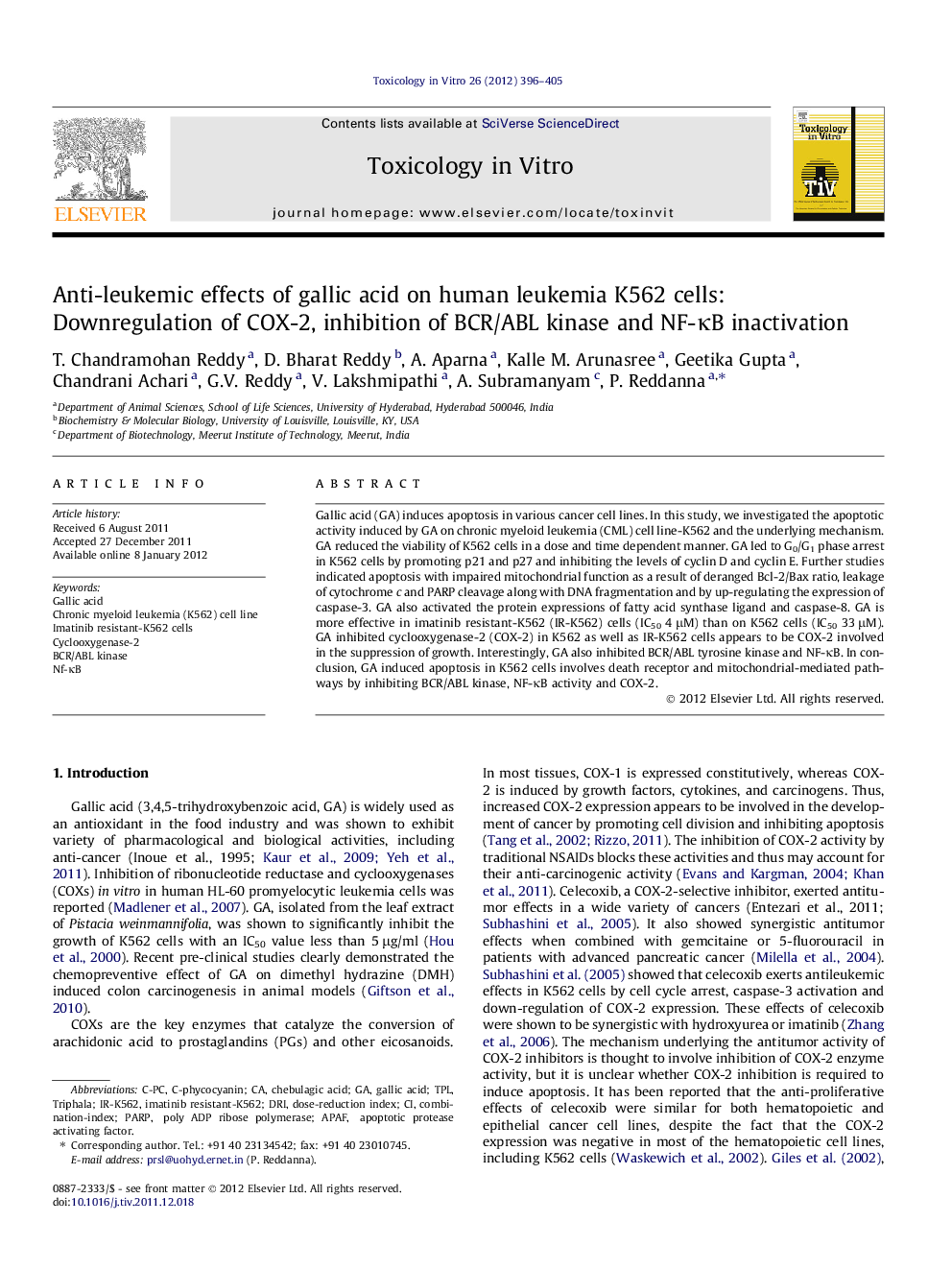| Article ID | Journal | Published Year | Pages | File Type |
|---|---|---|---|---|
| 2602661 | Toxicology in Vitro | 2012 | 10 Pages |
Gallic acid (GA) induces apoptosis in various cancer cell lines. In this study, we investigated the apoptotic activity induced by GA on chronic myeloid leukemia (CML) cell line-K562 and the underlying mechanism. GA reduced the viability of K562 cells in a dose and time dependent manner. GA led to G0/G1 phase arrest in K562 cells by promoting p21 and p27 and inhibiting the levels of cyclin D and cyclin E. Further studies indicated apoptosis with impaired mitochondrial function as a result of deranged Bcl-2/Bax ratio, leakage of cytochrome c and PARP cleavage along with DNA fragmentation and by up-regulating the expression of caspase-3. GA also activated the protein expressions of fatty acid synthase ligand and caspase-8. GA is more effective in imatinib resistant-K562 (IR-K562) cells (IC50 4 μM) than on K562 cells (IC50 33 μM). GA inhibited cyclooxygenase-2 (COX-2) in K562 as well as IR-K562 cells appears to be COX-2 involved in the suppression of growth. Interestingly, GA also inhibited BCR/ABL tyrosine kinase and NF-κB. In conclusion, GA induced apoptosis in K562 cells involves death receptor and mitochondrial-mediated pathways by inhibiting BCR/ABL kinase, NF-κB activity and COX-2.
Graphical abstractFigure optionsDownload full-size imageDownload as PowerPoint slideHighlights► The present study examined the mechanisms by which GA causes cell death. ► GA inhibited cell proliferation in various cancer cell lines. ► GA inhibits COX-2, NF-κB and BCR/ABL kinase. ► GA showed synergistic effects with imatinib in inducing apoptosis.
